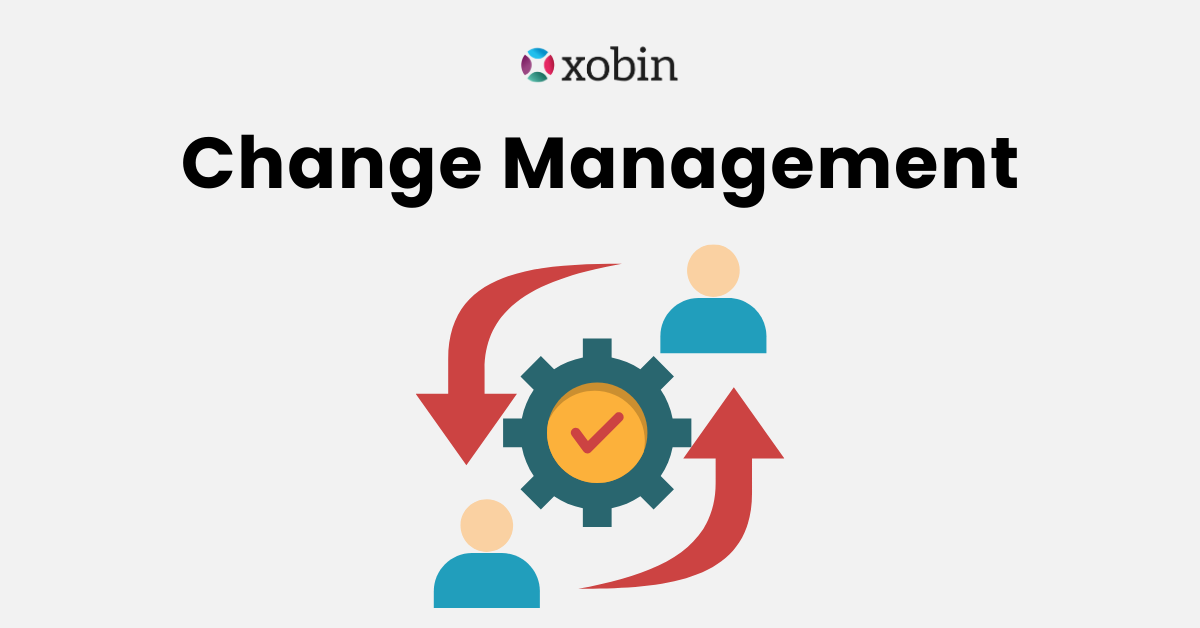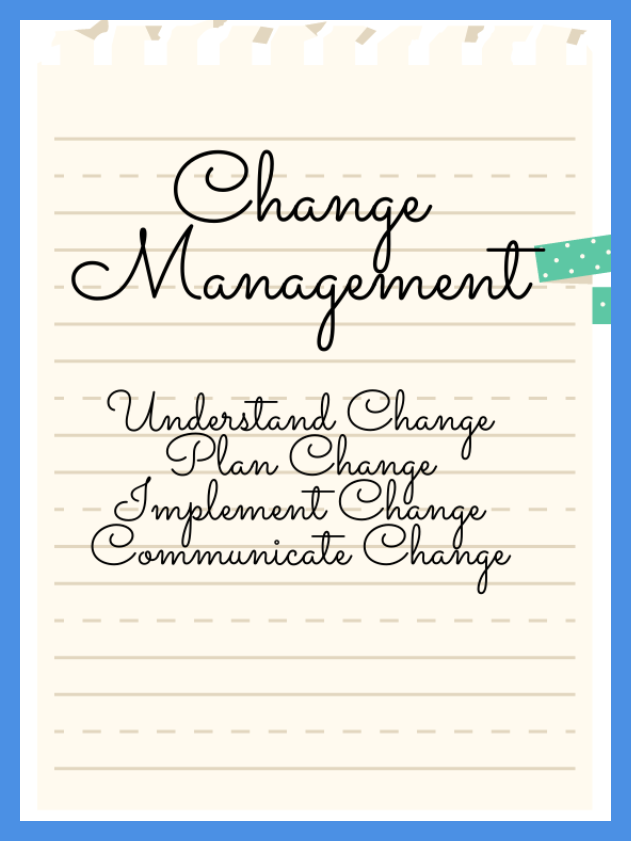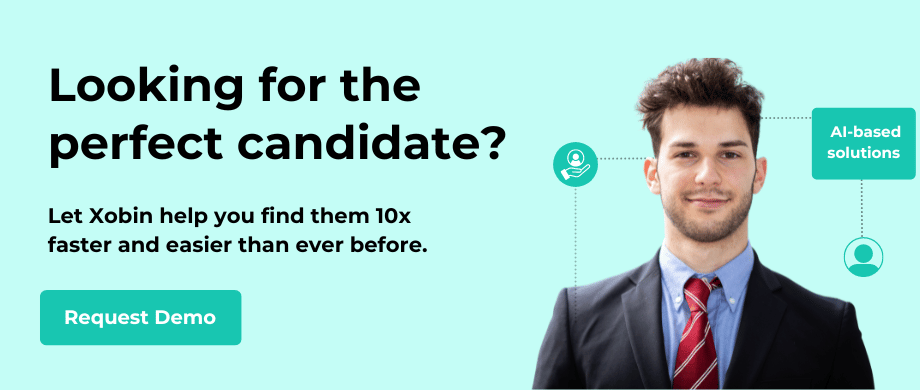XOBIPEDIA
HR Glossary

No organization can survive by standing the same until the end of time. There are constantly new challenges to overcome and better techniques for doing things.
That’s when change management comes into the process. It is a structured strategy of approach that ensures changes are implemented thoroughly and smoothly and have the desired results.
Here, we will discuss the same.
What is Change Management ?
Change management is the method and manner, that describes and implements change within a company in both its internal and external processes.
It includes preparing and supporting employees, establishing the necessary steps for change, and monitoring the pre and post-change activities for a successful implementation.

When is organizational change management needed ?
It is needed every time an enterprise initiates a program or event that interrupts the day-to-day operations. This undertaking impacts:
- Individual jobs work content.
Even simple changes can disrupt the workflow and be disconcerting for the staff. Most people become comfortable with the tools and the rhythm of the work overtime since many jobs require individuals or groups to perform tasks repeatedly.
- Individual employee’s role.
If a person is asked to take on a different role, may become very uncomfortable, as many people view their value to the organization as being a good technical architect, programmer, or security specialist.
- The organization itself.
Executive teams should debate about major changes before making final decisions, enabling each member to gain a deeper understanding of the effects.
Even when everyone doesn’t agree with the final decision, they still have time to determine whether to accept the new direction or to depart gracefully. As the individuals lower in the chain rarely have time to process major changes.
The Four Principles of Change Management
The four core Principles of Chain management are:

- Understand Change
To be able to successfully promote the benefits of any change, you must be able to understand them yourself. So, think about the need, benefits, positive impact, effect on the way of work, and how to achieve the change.
It will also be helpful to think about the negative outcomes of not making the change. And for the change to work, there needs to be sufficient disapproval with the old way of doing things too.
- Plan Change
Effective change needs a plan that works in the favor of your organization. The management of these projects can vary from organization to organization.
However, you’ll need to consider the:
- Sponsorship: Securing, engaging, and using high-level support and sponsorship of the change.
- Involvement: Who be the best option to help in designing and implementation the change?
- Buy-in If you are able to win support from people across the business only then the change will be most effective.
- Impact: What will be the assessment of success and what it would look like?
- Implement Change
It must also be planned that how exactly is this going to happen? Since there are a lot of different strategies that can be chosen to put your change into practice.
For example, you may need to prepared for, how to inject a sense of urgency into your actions, so there is momentum and encouragement for everyone to get behind the proposed changes.
- Communicate Change
Communication is a make-or-break component for any topic that affects a number of people.
The changes that need to be implemented have to be clear and relevant, so people can understand what and why they need to do it. But the tone also needs to be set right, so the needed emotional reaction is received.
What are the benefits of Change Management ?
- If change is a planned and managed process, then the benefits can serve as motivators and assessments of progress.
- It provides a way to foresee challenges and respond to them efficiently.
- Change management if applied effectively lowers the risk associated with change.
- The cost of changes are managed
- An effective management will support a smooth transition while maintaining morale, and productivity.
- A managed change will definitely, minimize resistance to change.
- The employee acceptance of the change increases.
- It reduces the disruptive aspects and emphasizes on positive opportunities.
- The team can respond faster to customer demands.
- It helps in aligning the existing resources within the organization.
- It also allows the organization to assess the overall impact of the change.
- The time required to implement the change gets reduced.
How to Drive Change Management ?
- Set the strategies
- Leading people
- Leading activities
To drive change, leaders must be forward-looking and introduce new and innovative ways of working by visualizing, how can the current processes and structures be further improved.
- Interpersonal leadership
A leader must be able to bring forward convincing and conclusive arguments.
- Leadership impact
Successful change leaders must be strongly driven and eager to meet and exceed expectations.
We hope this blog helped you. To understand “Change Management” in-depth, we recommend you reading “Reinventing Organizations: A Guide to Creating Organizations Inspired by the Next Stage in Human Consciousness by Frederic Laloux”
Keep visiting Xobin to read more blogs like this.

Recommended Content

Video Interviews can simplify your hiring
Don’t let a packed schedule be a hindrance in recruitment. Use structured interviews with the power of video to screen applicants. Understand the communication skills, motivation, and job skills using video interviews.

Complete Guide to Pre-Employment Testing
Move over from pen-paper based tests and manually checked assignments to pre-employment assessments. Democratize your organization hiring by screening for skills before you interview.

How can Employers adapt to Remote Hiring
With most jobs going remote, your best applicants could be in Melbourne or Miami. From remote screening and virtual interviews to remote onboarding, Learn the best practices to get started.


